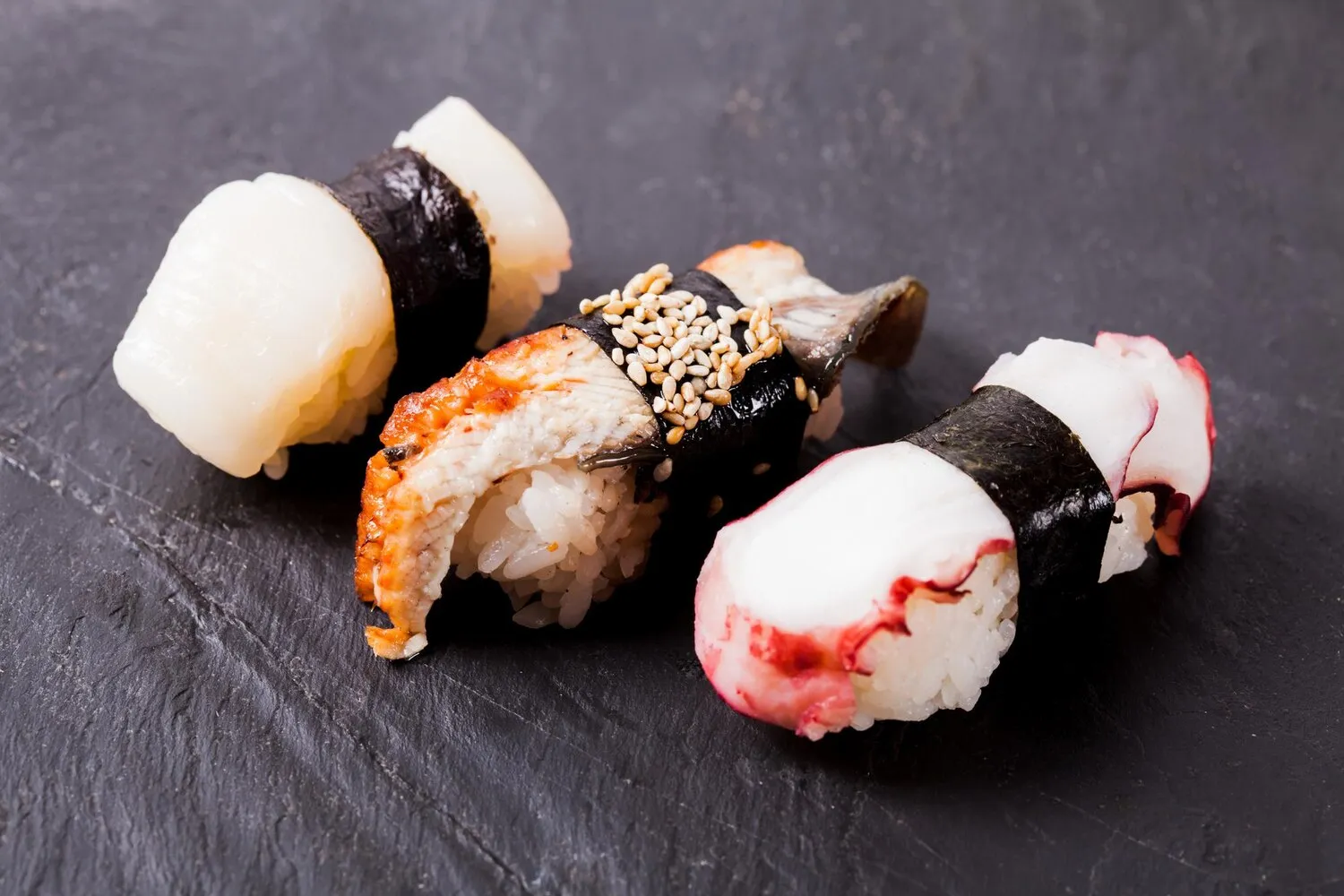
Nigiri Salmon
Slices of fresh salmon served over sushi rice.
Nutrition Facts
* The % Daily Value (DV) tells you how much a nutrient in a serving of food contributes to a daily diet. 2,000 calories a day is used for general nutrition advice.
While the concept of nigiri sushi dates back to the Edo period in Japan, the use of salmon in sushi is a relatively recent phenomenon. Traditionally, salmon was not widely consumed raw due to concerns about parasites. Its introduction to the sushi world is largely credited to Norway, who, in the 1980s, began exporting high-quality, parasite-free salmon to Japan.
Nigiri salmon, though a relatively modern addition to the sushi repertoire, has become immensely popular globally and is now a staple in many sushi restaurants. It represents a fusion of traditional Japanese techniques with international ingredients, highlighting the evolving nature of culinary traditions.
Sushi Etiquette
Eating nigiri sushi is often governed by certain etiquette rules. It's considered proper to eat nigiri in one bite, if possible. The fish side should be dipped lightly in soy sauce, avoiding soaking the rice. Using chopsticks is acceptable, but many prefer to use their fingers, especially when eating at a sushi bar.
Ingredient Quality
The quality of the ingredients is paramount in nigiri salmon. Fresh, high-grade salmon is essential for both taste and safety. The rice must be properly cooked and seasoned to achieve the correct texture and flavor. Attention to detail and meticulous preparation are crucial for a satisfying experience.
Nigiri salmon offers a harmonious blend of delicate flavors and textures. The richness of the salmon beautifully complements the slightly acidic and subtly sweet sushi rice.
The primary flavor profile revolves around the fresh, buttery taste of the salmon. Its fatty texture melts in the mouth, providing a luxurious sensation. The sushi rice, seasoned with rice vinegar, sugar, and salt, offers a contrasting yet complementary flavor. A touch of wasabi, if added, provides a pungent kick that cuts through the richness of the salmon. Soy sauce adds a salty umami element, enhancing the overall taste experience.
Soy Sauce Usage
Avoid over-soaking the nigiri in soy sauce, as it can overpower the delicate flavor of the salmon. A light dip of the fish side is sufficient.
Wasabi Application
Some sushi chefs already place a small amount of wasabi between the fish and the rice. If not, add a tiny amount to your taste. Too much wasabi can be overwhelming.
Freshness Matters
Ensure the salmon is extremely fresh. A reputable sushi restaurant will prioritize the quality and freshness of their fish.
Explore additional Nigiri dishes and restaurants
Explore NigiriDiscover top dining spots and culinary experiences in Foz do Iguaçu.
Explore Foz do IguaçuLearn more about the food culture, restaurant scene, and culinary heritage of Brazil.
Explore Brazil